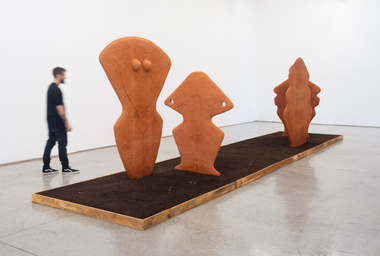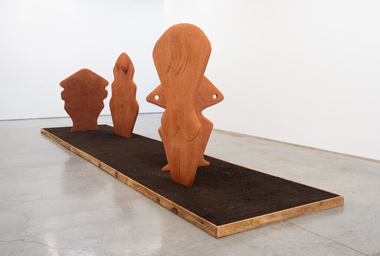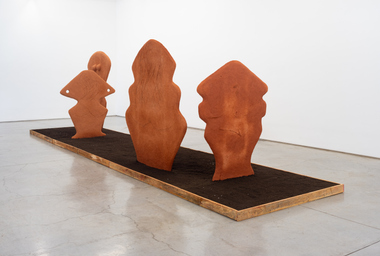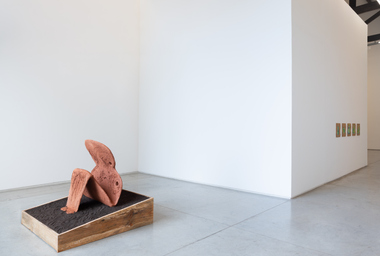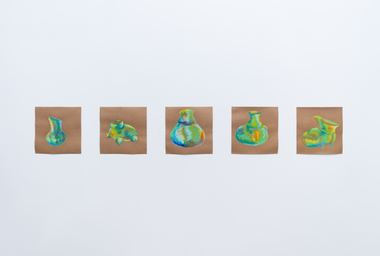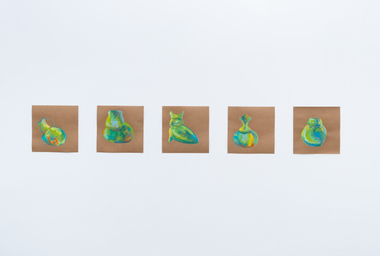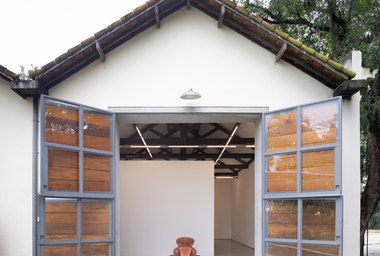
Gabriel Chaile
Principio de Semejanza
Aug 29 – Nov 18, 2023
Opening
Aug 29, 6 pm–9 pm
Carpintaria
Rua Jardim Botânico 971,
Rio de Janeiro
Directions
Download
Principio de Semejanza, Argentinean artist Gabriel Chaile’s first show in Brazil, takes place at Carpintaria and presents new sculptures built between São Paulo and Rio de Janeiro. Manipulating mud and adobe, Chaile articulates the ritual dimensions of his materials in large-scale figurative constructions that weave together formal allusions to classical statuary – like Greek Cycladic sculpture – to indigenous craft – such as Condorhuasi artifacts from the Tucumán region. In this new body of work, the artist deploys a visual configuration inherited from pre-Columbian peoples, taking minute talismans, many of them measuring less than 3cm, and extrapolating their scale into large dimensions.
The figures in the exhibition all have a feminine aspect, with protruding breasts and furrows describing buttocks and genitalia and opulent silhouettes recalling archaic personifications of fertility. Chaile distributes graphic markings on the faces of these works in a tactile exploration of drawing, as if they were immense inscription surfaces. Curiously headless, these bodies might also be seen as hypertrophic masks, in which traces no longer produce organs, members or appendices but wrinkles and lines on a face. This is a new direction in the artist’s practice, which thus far has produced figures whose rounded, cylindrical or almost spherical contours evoked ovens, pots or chimneys.
The show’s title is lifted from a photograph titled Principio de Semejanza, which the artist took in 2008, and alludes to this agglutinative composition of procedures, repertoires and visual cultures, transposed to the Brazilian context, apart from the process of finding similarity in unlikeness. The image, part of an archive compiled by the artist over the years, a sort of register of his trajectory, shows two women from his family; one holds a dog and the other a little girl in their laps, searching for lice in the fur and hair, respectively. The difference between a child and a dog, between a grandmother and a granddaughter, establishes an exchange that is at once intergenerational and interspecific. The paired configuration of the photograph is reflected in the exhibition, in which the flattened sculptures always occupy space in pairs, with a large and a small figure. Individually, each sculpture is also a pair, formed by each face of their volume. The two pairs are not binary oppositions but complementary metaphors. Recalling the photo, these forms are images of care. In a sense, it is care and the transmission of memory, together with the physical properties of space and things, that create a place.
In the artist’s practice, the toolbox employed in the construction of a new body of work is always given by the context, resources and restrictions provided or imposed by the environment. When he worked out of Tucumán, his hometown, in proximity to the methods and techniques of the native peoples, his practice involved collecting the mud and crafting adobe according to local knowledge in collaboration with those who passed it on. When he moved to Lisbon in 2020, Chaile had to reconstruct a communal context in which he could work: without the friends or family that had previously surrounded him, he grew close to the immigrant Latin population, with whom he began to work, establishing a sort of nomadic community. In Brazil, he occupied Galpão and Carpintaria with his materials and tools, transforming the exhibition space into a provisional context between an archaeological excavation and an open studio.
Territorial uprooting and habitation, as two poles in a dynamic relation, unfold into a central question: How is memory constructed and transmitted? His works do not draw out visual frontiers but weave a range of heterogeneous elements without establishing a hierarchy between them. They are illustrations of what Chaile calls “the engineering of necessity,” a procedure he sums up in a lapidary formula: “to work from what I have to give form to what I lack.”
